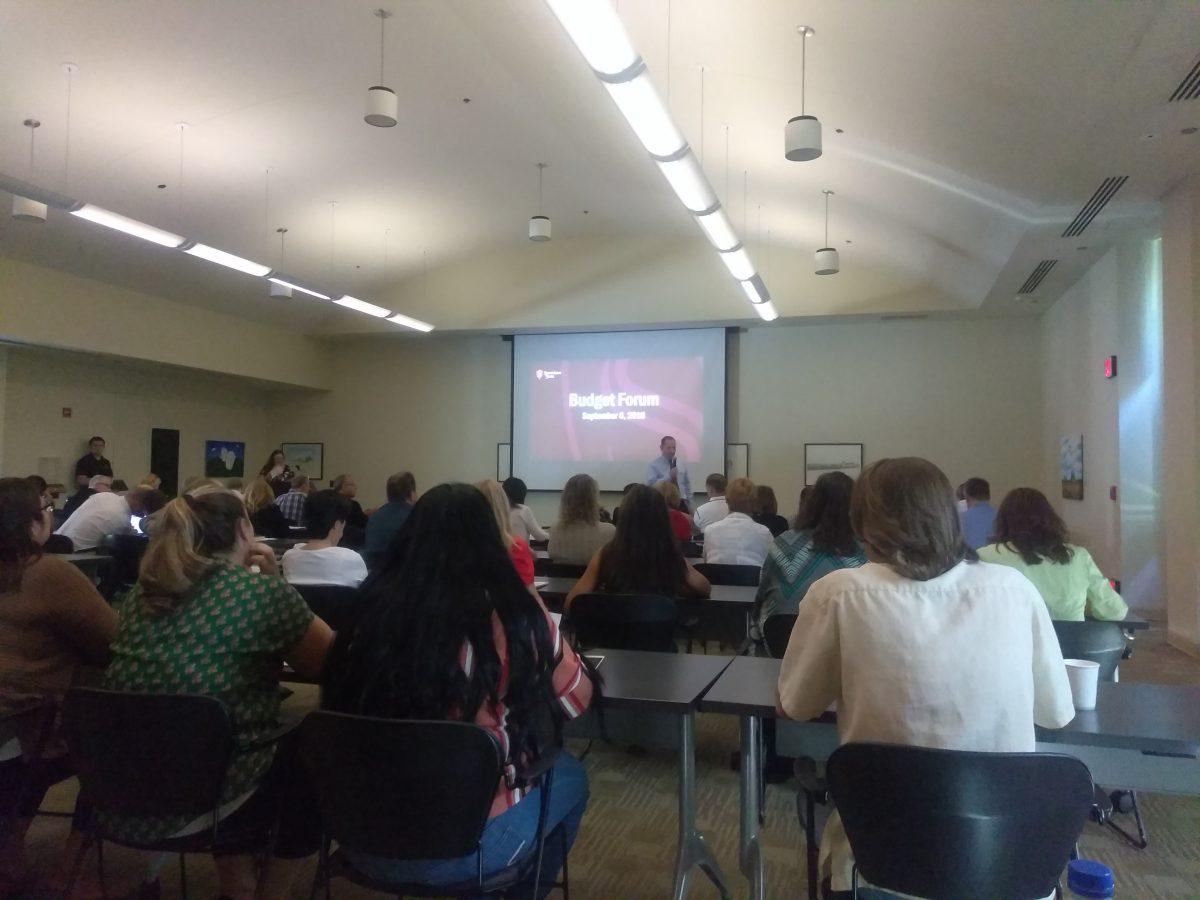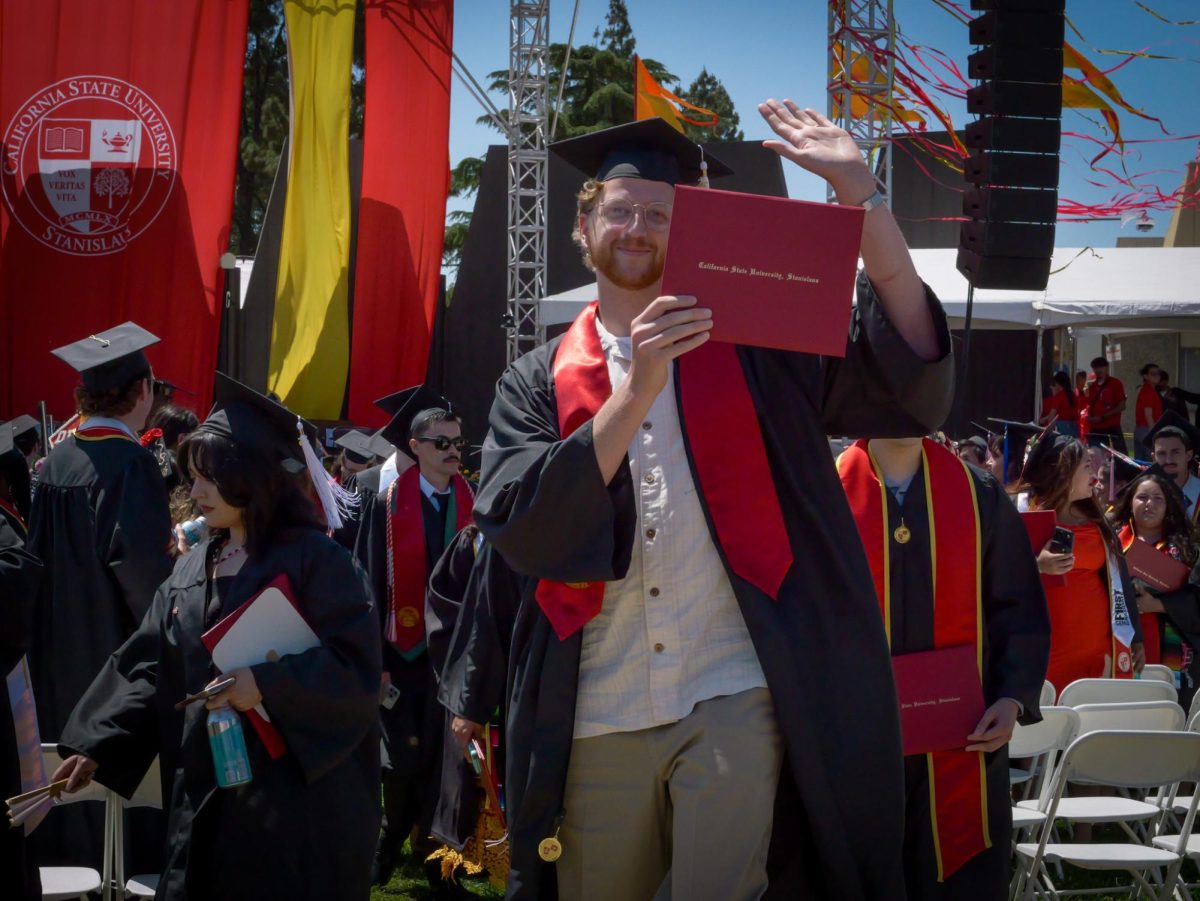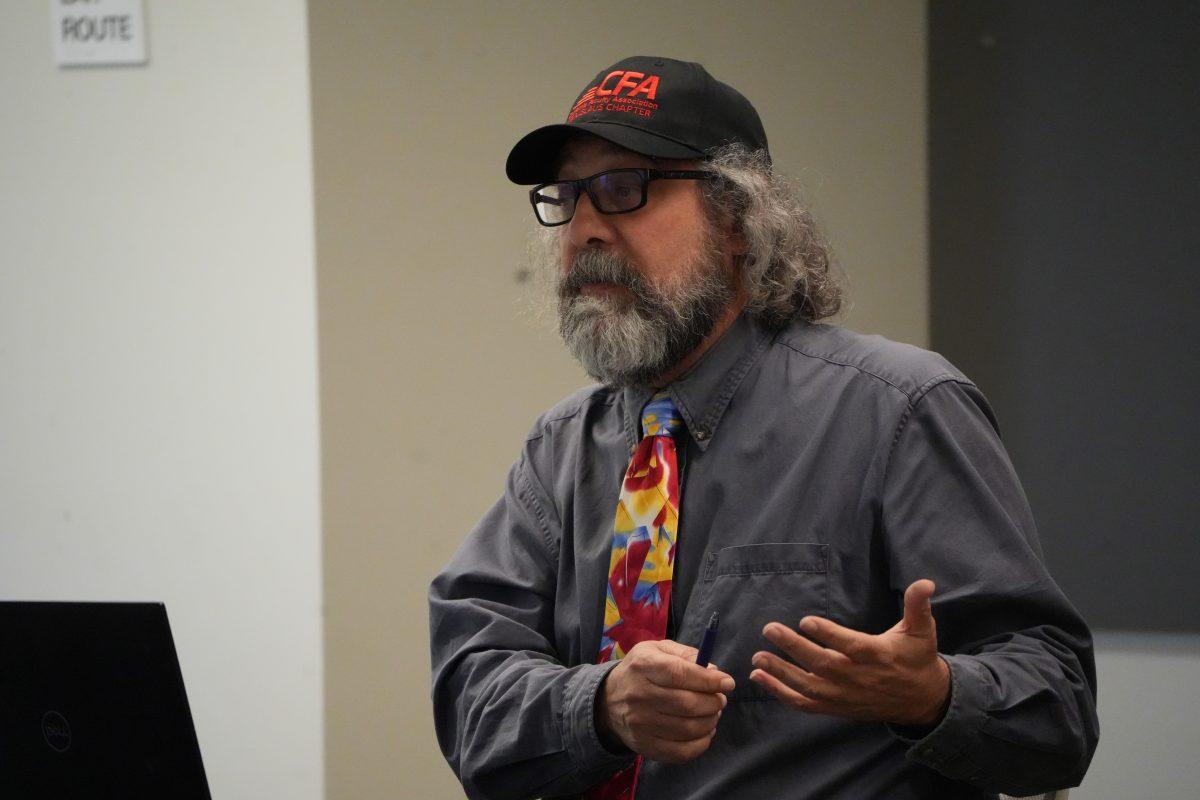The Department of Business and Finance held a campus budget review forum open to faculty, staff and students. The forum was led by Vice President/Chief Financial Officer Darrell Haydon who discussed how they plan to distribute the general operating fund.
As explained by Haydon the baseline funding is mainly full-time equivalent student budget (FTS) provided by state appropriation. This fund is usually matched by the tuition revenue provided by enrolled CSU students. The budget may also include one-time funds provided by the state or over-enrollment; these are used to settle deficits and for part-time faculty because the funds cannot be counted on to pay for long-term plans.
There’s not enough funding to finance every campus department or any need the campus has. As a result, the University Budget Advisory Committee (UBAC) and the University Cabinet prioritize request items that the campus needs the most. The UBAC and Cabinet look at the necessities of the campus like campus maintenance.
In the forum, Haydon addressed individual department’s concerns with their funding and how to use one-time funding and over enrollment. One concern was the reduction of tenure track faculty to meet the need for over-enrolled students.
Haydon said, “across all 23 campuses the demand for the number of applications exceeded our ability to admit the students.” Of all the CSU campuses, 33,000 students were not able to be enrolled due to impaction. Stan State is one of the few campuses that is not considered impacted.
He added that the university was 8 percent over enrolled and with these students they received tuition revenue but not state appropriation, so essentially the university faculty are educating students with half the money.
When asked why does the Associated Student, Inc. (ASI) take interest in how the campus budget is spent, ASI’s Vice President Michelle Nungaray (senior, Criminal Justice, minor in Ethics) said, “ASI is the official voice of the students. As Vice President of the student body, I am responsible for ensuring that the overall budget is bettering the needs of the students and that funds are being allocated towards student services. If ASI feels that the University is not allocating enough funds to go towards certain resources, then ASI would have to voice their concerns and make sure students are going to benefit from the budget.”
To be able to meet enrollment demands, the CSU campuses will need the help of the Governor’s Office to approve more state appropriation.
One solution was the the tuition raise in 2017, which Haydon said he was not “an advocate at all for having the students pay – and the cost of operating the CSU be provided through the state and not on the backs of students.” However, it did help to pay ongoing costs, and it helped to “close the gap” that the state failed to address.
During the forum, Dr. Chris Nagel, Speaker of the Faculty at Academic Senate and faculty of the Philosophy Department, discussed his views on the campuses’ budget spending in relation to the university’s mission.
“The university administration has choices about how to expand its resources. If the amount budgeted for the academic mission of the university is in a ‘deficit,’ this is just another way of saying that not enough resources are being dedicated to the academic mission,” Nagel said.
Categories:
Review of the Campus Budget Reveals Concerns for Resources
Juan Guitron
•
September 13, 2018
Stan State Warriors listening to the budget review forum presentation held at MSR 130. (Signal Photo/ Juan Guitron)
0
Donate to Signal
Your donation will support the student journalists of California State University, Stanislaus. Your contribution will allow us to purchase equipment and cover our annual website hosting costs.
More to Discover







